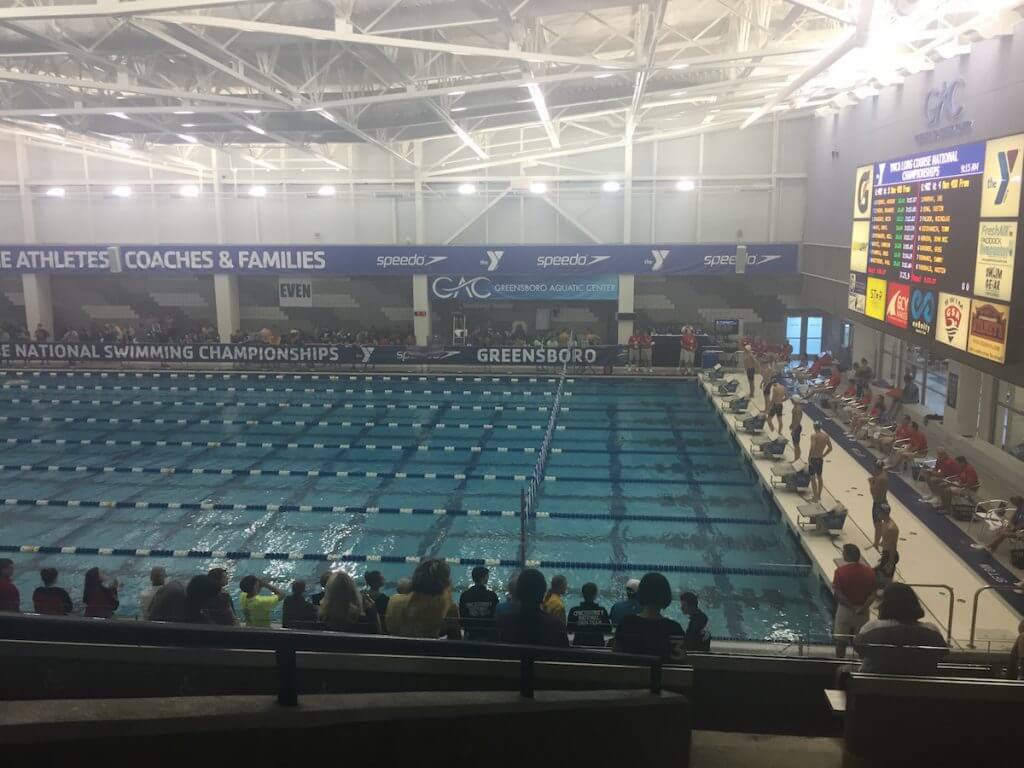Long Course vs. Short Course: A Look At Some Differences

Long Course and Short Course: A Look At Some Differences
For many swimmers, spring means more than just sunny weather and outdoor workouts. It’s the beginning of the infamous long course season.
Short course season runs for the majority of the year, from the end of August to the end of March. Events are swum in a 25-meter or 25-yard pool. Long course season starts at the end of March and concludes in early August, and uses a 50-meter pool. Typically, high school and college meets are swum in SCY (short course yards), while major international competitions are swum in LCM (long course meters). Records are also kept by FINA in short course and long course meters.
The only tangible difference between short and long course is the pool length. The distance of every event is still the same. Despite this, all swimmers know that swimming in a short course pool feels considerably faster and less tiring. So what makes long course so different?
Turns and Gliding
An obvious difference between a short and long course pool is the number of turns. A short course race has twice as much turning and gliding, allowing you to spend up to 60% of the race underwater. On the other hand, a long course pool only allows you to stay underwater for up to 30% of the race. Underwaters have a major effect on speed. Moving at the surface of the water is slower. Swimming under the surface avoids this problem, and more energy is used to push you forward.
The extra underwater time doesn’t just give you a boost, though it serves as “recovery time.” While your lungs may beg to differ, this period of your race is much more relaxed, and you expend less energy. During high intensity exercise, your muscle cells are rapidly breaking down molecules used to release energy, and in the process, release a high volume of hydrogen ions into the cell. Because your muscles are essentially working in “overdrive,” the hydrogen accumulates quickly and lowers the pH in the cells. This results in metabolic acidosis and causes the all-too-familiar burning sensation and muscle fatigue. However, when you’re gliding, your muscles catch a break and are able to clear out some of the hydrogen, reducing the muscle fatigue before the next lap starts. In the end, the extra underwaters in short course races help us to maintain a higher energy output throughout.
Stroke Rate and Power
One of the most important details of racing is stroke rate, especially during a sprint. Attaining a high stroke rate will drastically improve your speed. The fastest sprinters don’t necessarily have more power per stroke than everybody else, but they do have an impressively high stroke frequency. However, stroke rate ties back to muscle fatigue. As you may have noticed, swimming longer distances continuously makes it harder to maintain the same high stroke rate. In a longer pool, you experience much more stroke degradation through the second half of the lap than in a short course pool, leading to a slower overall stroke rate in a long course race. Because of this, endurance is much more of a challenge in bigger pools. Swimmers not only have to make it through the race, but also have to resist the increased stroke degradation through the longer laps.
Certain elements of your swimming can give you advantages in each pool. Swimmers with more peak leg power have much stronger turns, and are able to obtain a larger speed boost when they push off the wall, giving them a “leg up” in short course pools. In comparison with others, they experience a much higher percent decrease from their long course to short course times. Distance swimmers tend to experience a smaller increase from their short course and long course times, since their increased endurance over a long period of time helps them to regulate their stroke rate and power even throughout the 50-meter laps.
Which one is better?
There’s no answer to which format is better. The differences show that based on swimmers’ strengths and weaknesses, some perform better in one pool versus another. While many of us tend to dread swimming long course practices, they help our bodies become accustomed to sprinting with higher heart rate and muscle fatigue through longer continuous distances. In contrast with short course training, long course training improves your cells’ ability to regulate the acidity in your muscles, decreasing the amount of muscle burning and fatigue you feel. It could be painful during practice, but will ultimately prepare you for a race in any pool.
All commentaries are the opinion of the author and do not necessarily reflect the views of Swimming World Magazine nor its staff.




I was a swimmer when I was young. Today, at age 75, I can barely complete one lap. Sad.